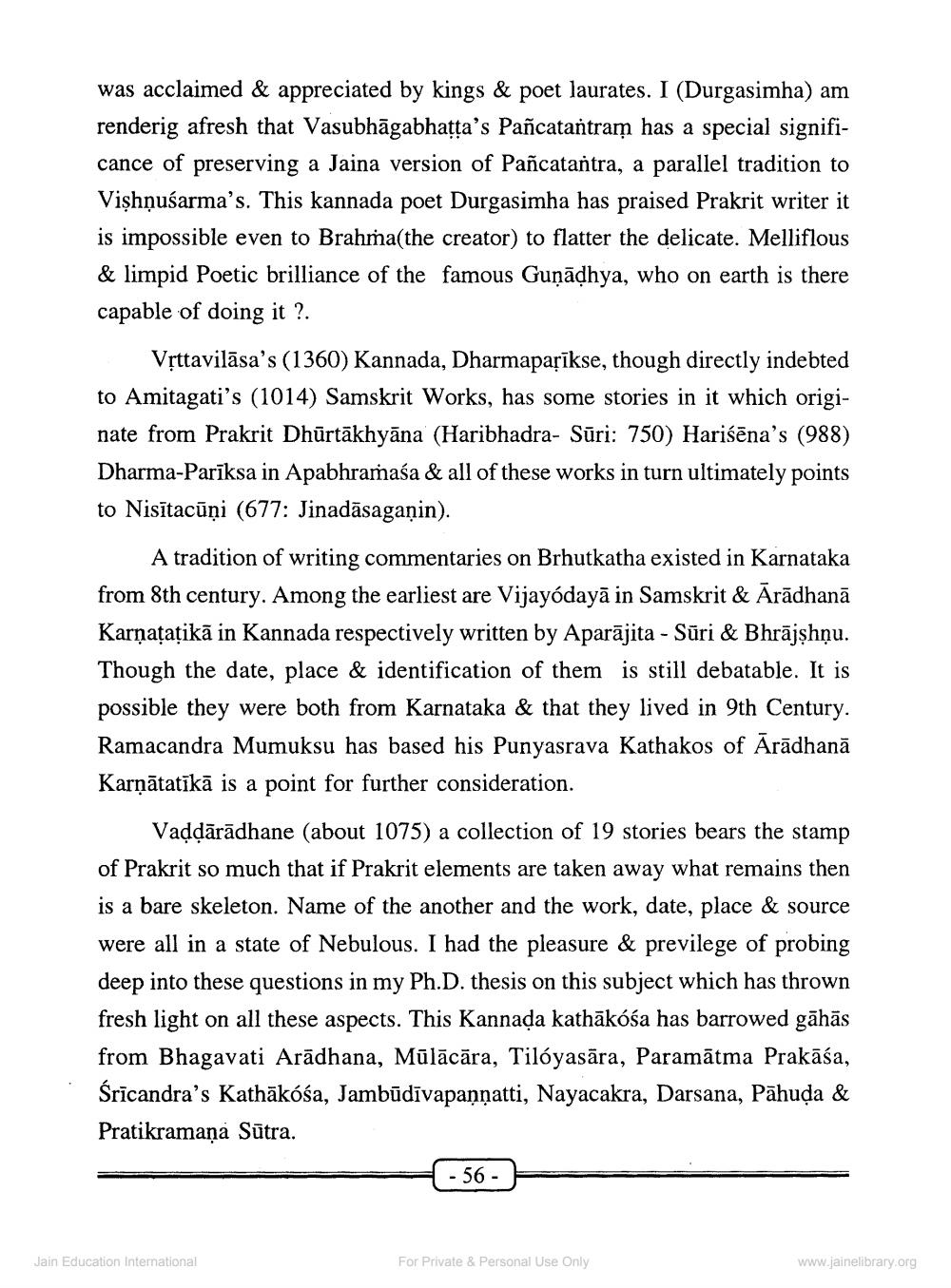________________
was acclaimed & appreciated by kings & poet laurates. I (Durgasimha) am renderig afresh that Vasubhāgabhatta's Pañcatantram has a special significance of preserving a Jaina version of Pañcatantra, a parallel tradition to Vishņuśarma's. This kannada poet Durgasimha has praised Prakrit writer it is impossible even to Brahma(the creator) to flatter the delicate. Melliflous & limpid Poetic brilliance of the famous Gunādhya, who on earth is there capable of doing it ?.
Vịttavilāsa's (1360) Kannada, Dharmaparīkse, though directly indebted to Amitagati's (1014) Samskrit Works, has some stories in it which originate from Prakrit Dhūrtākhyāna (Haribhadra- Sūri: 750) Hariśēna's (988) Dharma-Parīksa in Apabhramaśa & all of these works in turn ultimately points to Nisītacūņi (677: Jinadāsagasin).
A tradition of writing commentaries on Brhutkatha existed in Karnataka from 8th century. Among the earliest are Vijayódayā in Samskrit & Ārādhanā Karņaţaţikā in Kannada respectively written by Aparājita - Sūri & Bhrājșhņu. Though the date, place & identification of them is still debatable. It is possible they were both from Karnataka & that they lived in 9th Century. Ramacandra Mumuksu has based his Punyasrava Kathakos of Ārādhanā Karņātatīkā is a point for further consideration.
Vaddārādhane (about 1075) a collection of 19 stories bears the stamp of Prakrit so much that if Prakrit elements are taken away what remains then is a bare skeleton. Name of the another and the work, date, place & source were all in a state of Nebulous. I had the pleasure & previlege of probing deep into these questions in my Ph.D. thesis on this subject which has thrown fresh light on all these aspects. This Kannada kathākośa has barrowed gāhās from Bhagavati Arādhana, Mūlācāra, Tilóyasāra, Paramātma Prakāśa, Śrīcandra's Kathākóśa, Jambūdīvapaņņatti, Nayacakra, Darsana, Pāhuda & Pratikramaņa Sūtra.
- 56 -
Jain Education International
For Private & Personal Use Only
www.jainelibrary.org




